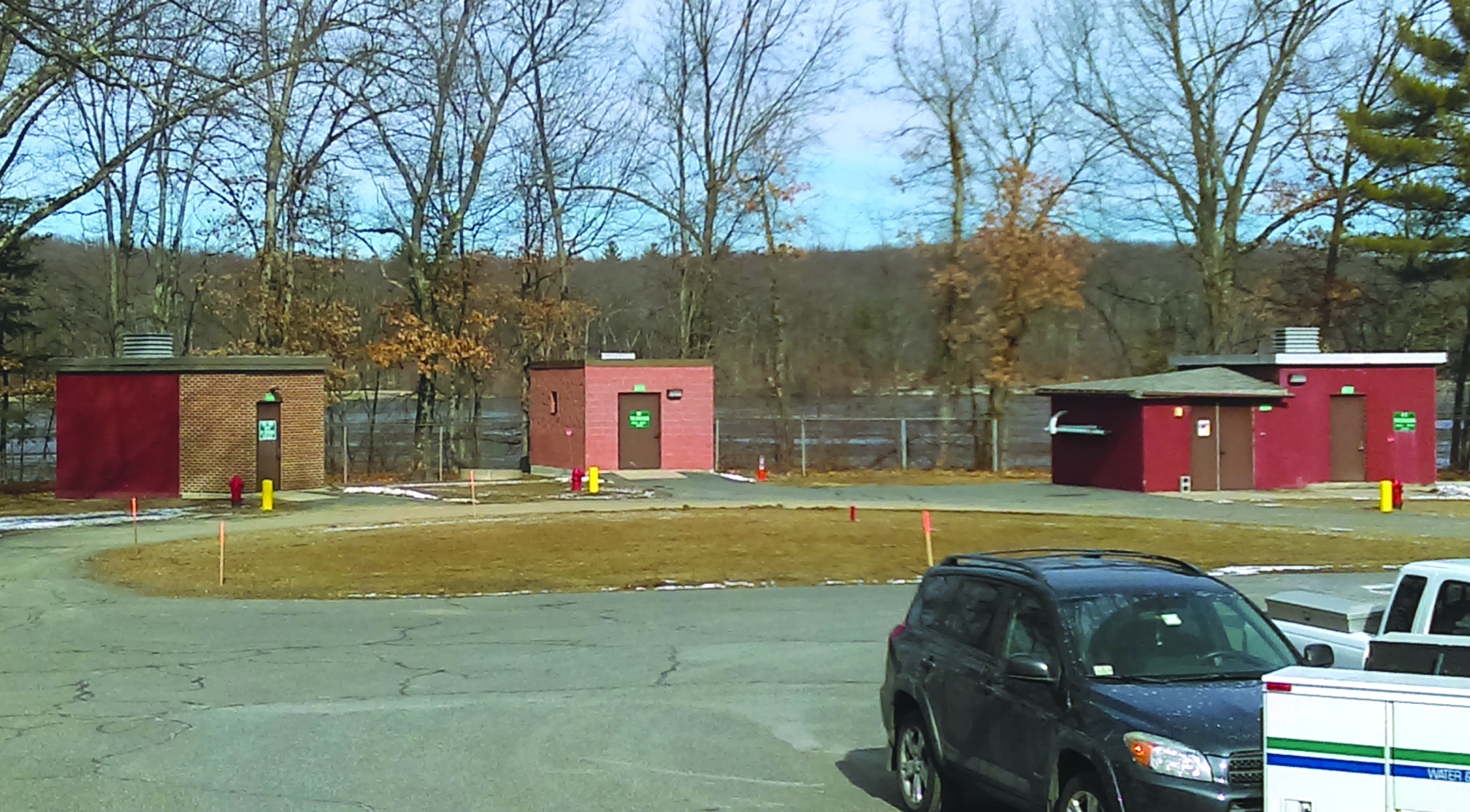You turn on the tap and water gushes out. But where does it come from? Ashland’s water originates in an ancient aquifer located underneath the man-made reservoir at Hopkinton State Park. Think of it as a giant underground water tank that gets replenished through rainfall, snow or streams slowly trickling down through the soil.
In the late 1800s, the Hopkinton reservoir was created through damming Indian Brook, a Sudbury River tributary, to provide back-up drinking water to the city of Boston. Once the Quabbin Reservoir opened in the 1940s, the Hopkinton Reservoir was no longer needed and was reborn as a state park. The park lies in both Hopkinton and Ashland.
Ashland has a state-of-the art water treatment plant. To learn more about it, I met with Jeff Fournier, plant manager and Woodard and Curran contractor, and Roy Correia, DPW general foreman, who gave me an extensive tour of the buildings and the grounds. Two main buildings, water treatment and control, watch guard over a horseshoe of five small well houses (4, 5, 6, 7 and 8) set within a hundred feet of the reservoir.
Inside the control building, a sophisticated hardware and software system called SCADA monitors the water levels in the five wells and allows them to be sped up or slowed down as needed. Well use is staggered, so each can pump to capacity while others rest and refill. If the water level drops lower than five feet below the well’s expensive screen, a protective device that acts as a filter to keep out pebbles and debris, an alarm goes off and system protections get implemented.
Between the 1950s and the 1990s, the town drilled these wells due to their proximity to the aquifer not the reservoir. Fournier explained that “the wells are not under the influence of the lake.” Good news for folks who do not cherish the idea of drinking water people plashed around in all summer.
The wells descend 35 to 40 feet into the aquifer where they vacuum up the groundwater, which gets piped into the plant where it undergoes disinfection with chloramine and ozone. Once the water passes Ashland’s strict quality control, it gets distributed to homes and businesses through 80 miles of pipes by two methods of pressure: Dynamic, by the pumps when they are running, and Static, by the high elevation of the two enormous water towers on Cedar Street and Woodridge Lane when the system has reached capacity and the pumps have turned off.
The town’s two water towers serve several purposes. First, they hold the water unused by consumers, often up to several million gallons. During an emergency, such as a broken water main or a fire, the stored water circulates into the system to provide backup until the broken pipe gets repaired or the fire gets extinguished. Second, the towers are integral to the town’s water pressure system. When the water levels drop in the towers, the pumps turn back on and the water extraction cycle starts all over again. If you live closer to the tanks your water pressure might be higher than if you live farther away. This is due to variations in geological elevations.
To ensure the water in the tanks does not stagnate and produce microbiological growth, the staff rigorously tests the water for plate counts, residuals and ph. If levels begin to exceed normal, the staff circulates the tank water through the system.
When the Hopkinton reservoir drops to 295.85 feet (above sea level), an agreement with the Mass. Department of Environmental Protection (DEP) triggers a Stage One Water Ban, and below 295.35, a Stage Two Water Ban. The DEP requires those bans to ensure optimum Hopkinton reservoir levels during the park’s summer operating months.
Despite going through several water bans and a serious drought during the summer and fall of 2016, the well screens have never been damaged and the wells have never sucked in air. “I would never let that happen,” Correia said. “There are system alarms in place that notify personnel. When this level is approached, the Town enacts water conservation.”
Fortunately for residents, Ashland has one of the best water treatment plants in Massachusetts, run by highly skilled operators and one of only three with a state-of-the-art ozone generator. It has also won awards. In 2012, New England Water Works Association awarded it the Utility of the Year and Massachusetts Water Works Association awarded the Water Works Pride to Fournier.
Next time you turn on the faucet to fill up a saucepan, brush your teeth or take a shower, give special thanks to the sophisticated monitoring and water testing that takes place to bring you that clean water. One in ten or 663 million people around the world do not have access to safe water.

Issue Date:
April, 2017
Article Body:
